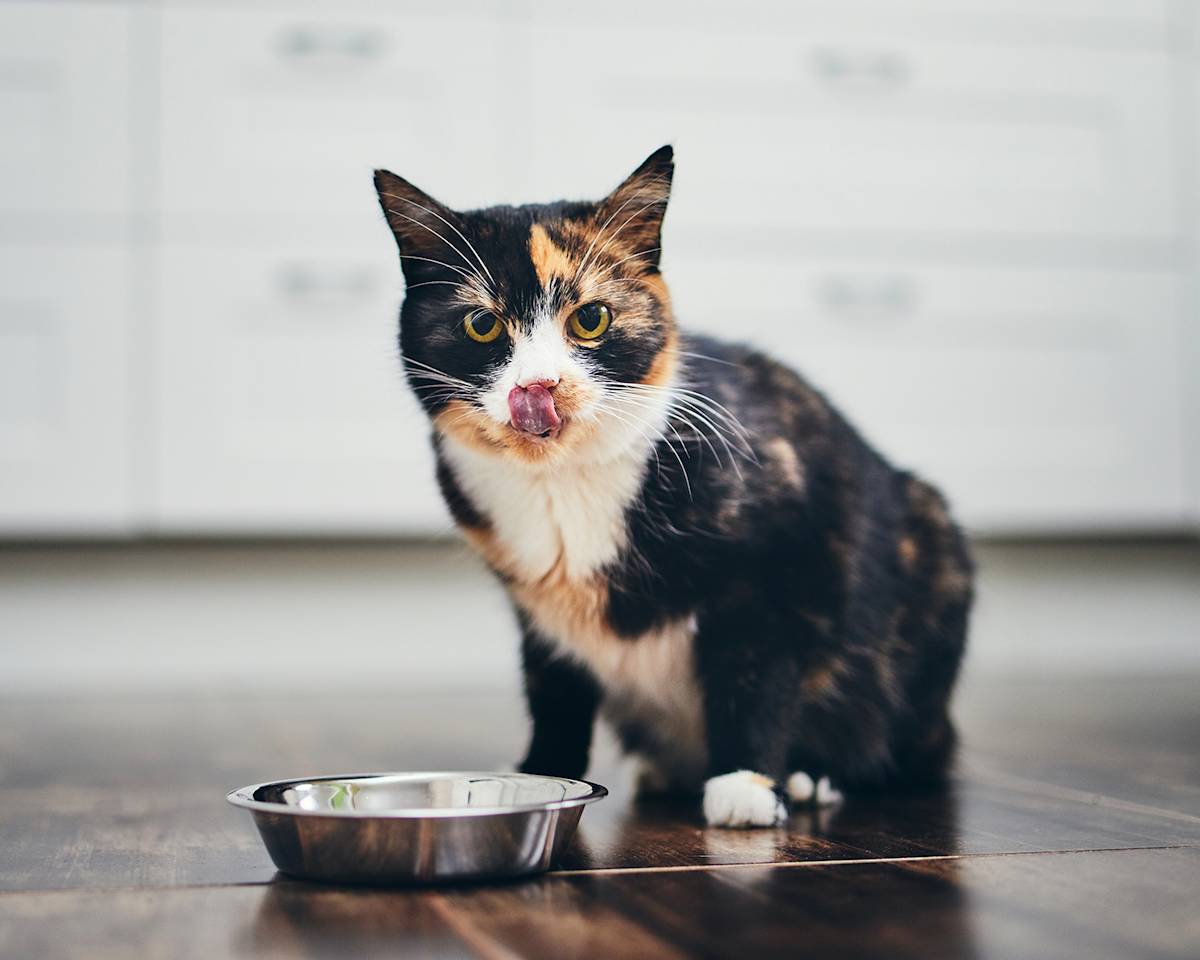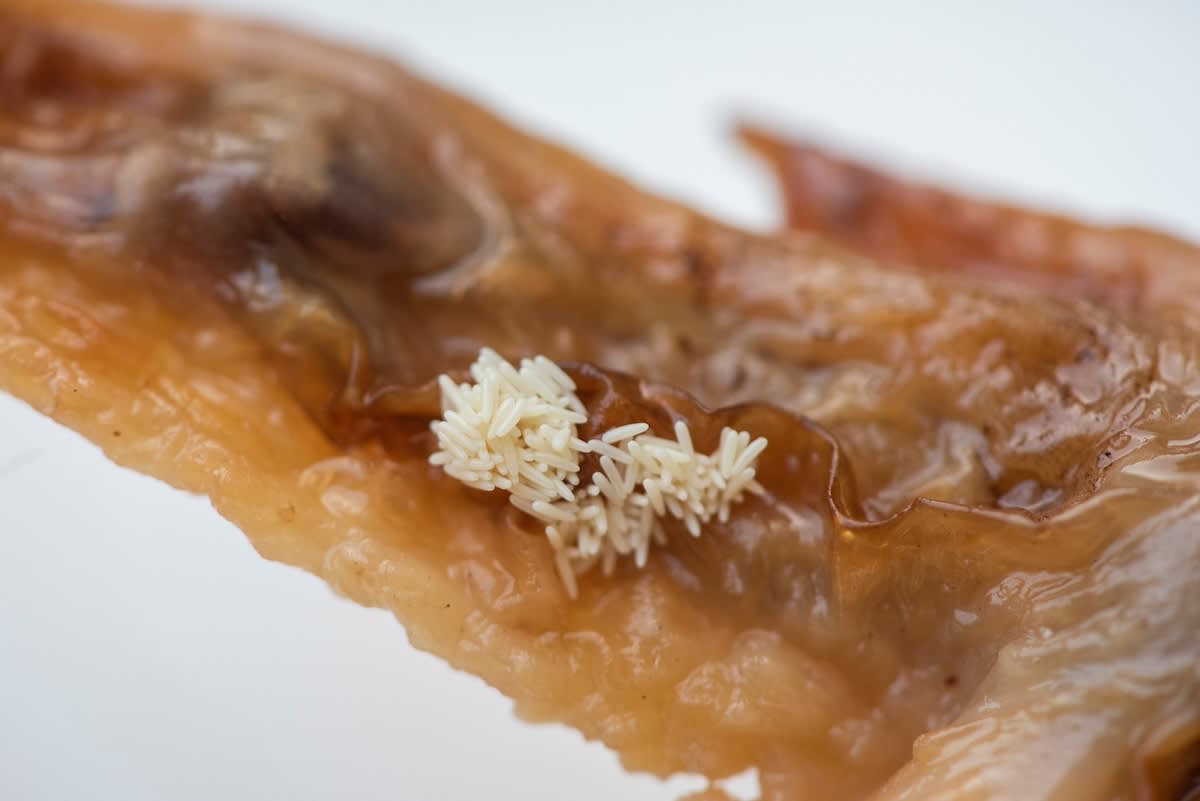Ick Alert: How to Keep Flies and Their Eggs Out of Your Cat’s Food
Hands down the worst bit of cat parenting in the summer

Share Article
What we want most for our cats is to give them the healthiest, happiest life possible. So if you, like many cat parents, have ever had the experience of finding flies flying around or their eggs buried in your cat’s food, you understandably feel like you want to vom, for you and for them.
You put the food out in the morning, but easily distracted, your cat eats a few bites and leaves the rest for a couple of hours – perhaps for a sleep in the sun or to check out what’s happening outside. And lo and behold, by the time they come back, flies have found their way to the meaty bowl of goodness. They might have even laid their eggs in the food.
It’s not just that it‘s gross, flies have the potential of carrying harmful bacteriaopens in new tab that they pick up from trash, faeces or decomposing materials, and there is a risk that when they land on your cat’s food, they could contaminate the food and get your cat sick.
It’s important to keep flies and their eggs away from your cat’s food, but exactly how to do that is another question entirely. Ahead, we’ve got a few ways to help you do just this.
Why are flies attracted to cat food?
High-quality, wet or tinned cat food is rich in taste, moisture, fat and protein, and flies love it. Wet food, with its higher in moisture content, stronger odour and faster decomposition rate makes it a more tempting target than dry food.
“Flies are attracted to cat food because its protein, fat and moisture emit strong smells that resemble decaying organic matter. To a fly, that’s a perfect place to feed – and lay eggs,” says veterinarian surgeon Dr Lucy Andrews Hird MRCVSopens in new tab.
In the summer, when hot weather degrades the exposed food more quickly, a fly’s paradise is created.
“Food breaks down and releases odours faster in warmer weather, so the flies are more attracted to it,” Dr Andrews Hird says. “In addition, the warmer temperatures and higher humidity in the summer months create ideal conditions for flies to breed, so there are many more of them around. A double whammy.”
Do flies lay eggs on cat food?
The short, and very gross truth is that yes, flies do lay eggs on cat food, particularly when the food is decaying because it attracts them and feeds the larvae (maggots) when they do hatch.
“The eggs are small, round, and white, looking a bit like grains of rice,” Dr Andrews Hird says.
Rest assured though – it usually takes around 24 hours for maggots to appear.
How to keep flies away from cat food
If you are looking to keep your cat’s food (and your cat) safe from pesty flies, we’ve got some tried and true ways to do just that.
Use food covers
One of the most effective ways to keep flies away from your cat’s food is to cover it once they’ve eaten, taking off the cover once they’re ready to eat again. You’ll need to make sure the seal is tight so no flies can sneak in.
“It’s also possible to get microchip activated, automatic pet feedersopens in new tab which cover the food when not in use,” Dr Andrews Hird says.
Store food in the fridge
If you’re going to refrigerate leftover food, do it immediately after the cat has finished eating, offering the refrigerated food at a later time.
“Covered wet cat food lasts in the fridge for a couple of days,” says Dr Andrews Hird.
Put out pet safe fly traps
If you want to keep your cat’s food readily available throughout the day, you might consider fly traps or fly paper close by the feeding bowl. It’ll also keep the flies from repopulating.
You’ll just want to make sure you put the trap out of reach of little paws as the chemicals used may be toxic to your cat. Never use a product that contains permethrin.
If you want to go the totally natural and cheap route, you can make your own fly trapopens in new tab.
Although traps won’t catch every fly, they will reduce the number flies around your cat’s food bowl.
Keep the cat food away from sunlight
Finding the perfect location for your cat’s food bowl and feeding at a cool time of day could also reduce the chances of flies landing in the food.
If you put that bowl of food in a place where sunlight (warmth) pours in, chances are your fly problem will be even worse.
“Try and keep your cat’s food bowl in a cool dry area of the house away from direct sunlight and their litter tray,” suggests Dr Andrews Hird.
Feed your cat smaller portions
If your cat consistently leaves a portion of food at meal times, consider giving them smaller portions throughout the day, refrigerating the unused portion until ready for use.
Without food just sitting around, flies won’t be tempted, but this method will require you to be available to feed your cat throughout the day.
Clean your cat's feeding area
“Wash the cat food bowl daily and keep the area surrounding the bowl clean,” Dr Andrews Hird says.
Feeding in a shallow, easy-to-clean ceramic or stainless steel bowl reduces food residue that might attract flies, as plastic bowls carry scents even after washing.
How long can you leave cat food out before flies come?
Although Dr Andrews Hird says the time you can leave food out before flies come depends on the specific environment, it’s safe to only feed your cat wet food when they’re hungry.
In warm conditions, she says flies can lay eggs on wet food very quickly, so even more important to put that food away quickly.
Bottom line: how to keep the flies away from cat food
Disease-carrying flies will be attracted to your cat’s food and could potentially lay their eggs in the food. The good news is that there are ways to keep the flies away – tightly cover the bowl, store uneaten food in the refrigerator, purchase or make fly traps, place the bowl out of the sun, feed smaller portions more frequently, and keep the feeding station clean.
Cat food and flies: frequently asked questions
My cat ate a fly, will they be okay?
If your cat eats a fly, it is most likely nothing to worry about. Even though flies do carry bacteria, stomach acid should kill the bacteriaopens in new tab.
“Chasing and eating insects is part of normal cat behaviour and a cat’s digestive system can break down a fly,” Dr Andrews Hird says reassuringly. “Flies also pose no risk of stinging. However, very occasionally, flies may carry bacteria that could cause your cat digestive upset, so if you have any concerns it’s best to contact your vet.”
How to repel flies from cat food?
There are a number of ways to keep flies away from cat food: tightly cover the bowl, store uneaten food in the refrigerator, purchase or make fly traps, place the bowl out of the sun, feed smaller portions more frequently and keep the feeding station clean.
Are there non-toxic fly repellents that can be used around cat food?
Generally, fly paper and sticky strips rely on adhesion rather than chemicals to trap flies.
You could also use a small fan near the food to circulate air, or to buy a fly-repelling mesh cover to protect the food.
Don’t use any indoor insect sprays without consulting with a veterinarian. You should never use a product that contains permethrin, as it’s highly toxic to cats.
What should I do if I find fly eggs in my cat’s food?
If you find fly eggs in your cat’s food, you should immediately throw the food away in the outside bin, ideally in a sealed bag.
“Wash the bowl with hot soapy water, dry thoroughly and replace with fresh food,” Dr Andrews Hird says.

Lauren Crosby Medlicott
Lauren is a freelance journalist who lives with her family and black labrador, Betsie, in the south Wales valleys. When she’s not working, she loves going for a dip in a nearby river and hiking in the Brecon Beacons.

